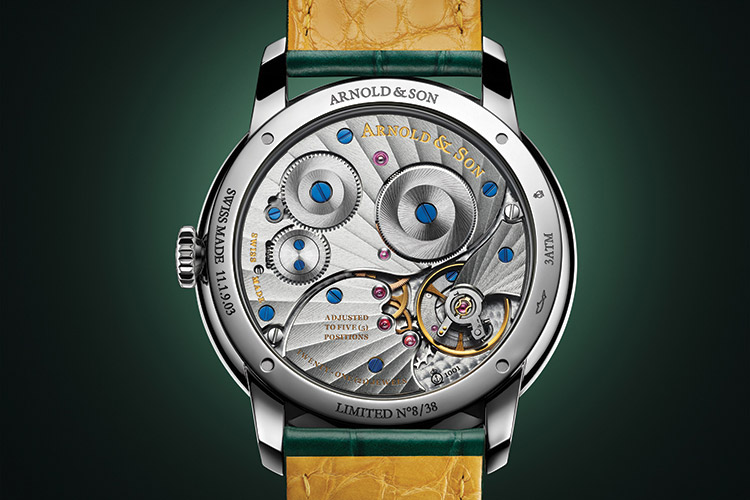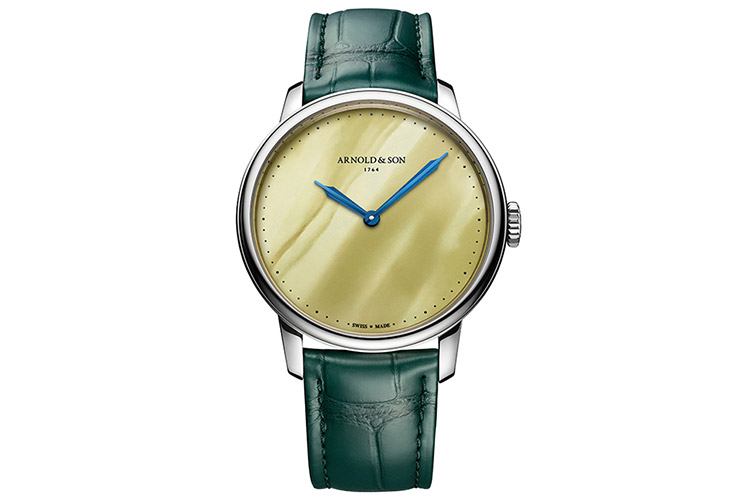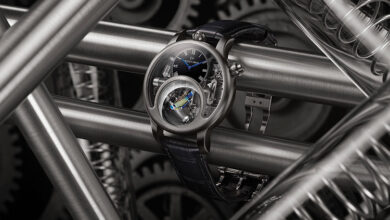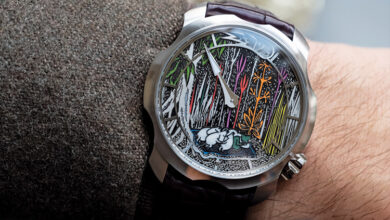Arnold & Son presents a millennia-old minimalist dial in latest offering
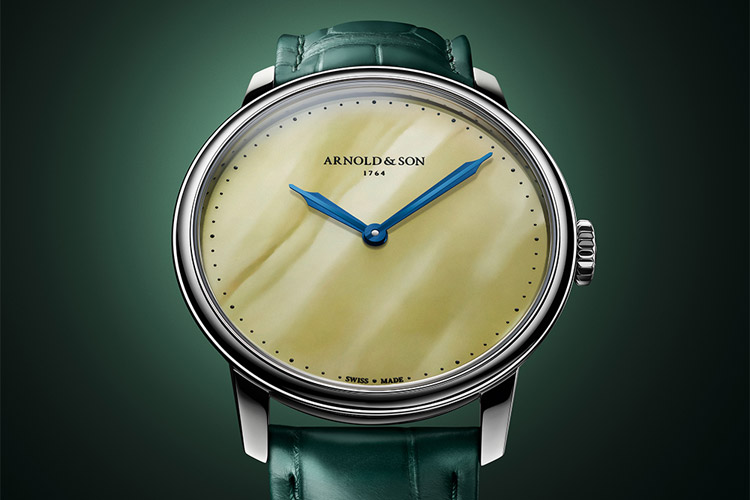
Many millennia in the making, the radiantly translucent Baltic amber is showcased in all its splendour on HM Steel Amber from Arnold & Son. It adorns the almost bare dial, framed by an ultra-thin steel case
A one-off piece from the Double Tourbillon collection played host to the glistening pale yellow hues of Baltic amber for the very first time. Difficult to source and challenging to work, it took the house several months to find the precious fossil needed to produce the 38 HM Steel Amber timepieces.
The house settled on a block weighing 1.6 kilograms, fossilised more than 30 million years ago. Not only is this amber rare, but there is a risk associated with any nodule, as it is impossible to know the quality of the contents in advance. The material may not have been suitable for making the dial.
Baltic amber is a little-known material in watchmaking. Formed by thousands of years of fossilisation of conifer resin, it is light, almost laminated, fragile yet resilient. The colour changes on contact with air and light, bordering on a brownish red at the surface. The heart, meanwhile, is a pale yellow, and it is this distinctive shade that has been selected by Arnold & Son.
The HM Steel Amber dial takes up all the space. As it has no complications, the timepiece is simply drilled in the centre to accommodate the hour and minute hands that give it its name. The HM collection has a special place in the Arnold & Son catalogue. Only used on an exceptional basis, this edition takes it in a new direction. The house has given it a very thin steel case with a diameter of 39.5 mm.
To echo the density of the dial, Arnold & Son chose one of its most iconic movements. The A&S1001 calibre, like all the house’s movements, is entirely created and cased up by the manufacture in La Chaux-de-Fonds. With an ultra-thin architecture, its total thickness is limited to 2.7 mm, allowing for a case that is just 7.82 mm deep. With an oscillation frequency of 3 Hz, it offers a remarkable 90 hours of autonomy.
The caseback side of the A&S1001 calibre is also fully decorated. Its surface is adorned with radiating Côtes de Genève stripes emanating from the balance staff: the nerve centre of the movement. The corners are lowered and polished, contrasting with the entirely circular-grained mainplate underneath.
